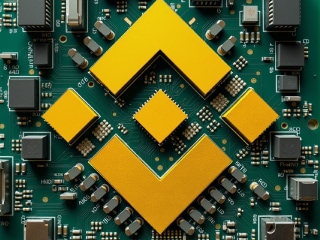Nvidia Releases Chat With RTX, an AI Chatbot That Runs Locally on Windows PC
To run Nvidia’s Chat with RTX, a Windows PC with RTX 30 or 40 series GPU with a minimum of 8GB VRAM is required.

Photo Credit: Nvidia
Since Chat with RTX runs locally, the data fed to it is not shared with a third party
Nvidia has released an artificial intelligence (AI)-powered chatbot called Chat with RTX that runs locally on a PC and does not need to connect to the Internet. The GPU maker has been at the forefront of the AI industry since the generative AI boom, with its advanced AI chips powering AI products and services. Nvidia also has an AI platform that provides end-to-end solutions for enterprises. The company is now building its own chatbots, and Chat with RTX is its first offering. The Nvidia chatbot is currently a demo app available for free.
Calling it a personalised AI chatbot, Nvidia released the tool on Tuesday (February 13). Users intending to download the software will need a Windows PC or workstation that runs on an RTX 30 or 40-series GPU with a minimum of 8GB VRAM. Once downloaded, the app can be installed with a few clicks and be used right away.
Since it is a local chatbot, Chat with RTX does not have any knowledge of the outside world. However, users can feed it with their own personal data, such as documents, files, and more, and customise it to run queries on them. One such use case can be feeding it large volumes of work-related documents and then asking it to summarise, analyse, or answer a specific question that could take hours to find manually. Similarly, it can be an effective research tool to skim through multiple studies and papers. It supports text, pdf, doc/docx, and xml file formats. Additionally, the AI bot also accepts YouTube video and playlist URLs and using the transcriptions of the videos, it can answer queries or summarise the video. For this functionality, it will require internet access.
As per the demo video, Chat with RTX essentially is a Web server along with a Python instance that does not contain the information of a large language model (LLM) when it is freshly downloaded. Users can pick between Mistral or Llama 2 models to train it, and then use their own data to run queries. The company states that the chatbot leverages open-source projects such as retrieval-augmented generation (RAG), TensorRT-LLM, and RTX acceleration for its functionality.
According to a report by The Verge, the app is approximately 40GB in size and the Python instance can occupy up to 3GB of RAM. One particular issue pointed out by the publication is that the chatbot creates JSON files inside the folders you ask it to index. So, feeding it your entire document folder or a large parent folder might be troublesome.
For the latest tech news and reviews, follow Gadgets 360 on X, Facebook, WhatsApp, Threads and Google News. For the latest videos on gadgets and tech, subscribe to our YouTube channel. If you want to know everything about top influencers, follow our in-house Who'sThat360 on Instagram and YouTube.
Related Stories
- Samsung Galaxy Unpacked 2025
- ChatGPT
- Redmi Note 14 Pro+
- iPhone 16
- Apple Vision Pro
- Oneplus 12
- OnePlus Nord CE 3 Lite 5G
- iPhone 13
- Xiaomi 14 Pro
- Oppo Find N3
- Tecno Spark Go (2023)
- Realme V30
- Best Phones Under 25000
- Samsung Galaxy S24 Series
- Cryptocurrency
- iQoo 12
- Samsung Galaxy S24 Ultra
- Giottus
- Samsung Galaxy Z Flip 5
- Apple 'Scary Fast'
- Housefull 5
- GoPro Hero 12 Black Review
- Invincible Season 2
- JioGlass
- HD Ready TV
- Laptop Under 50000
- Smartwatch Under 10000
- Latest Mobile Phones
- Compare Phones
- Oppo K13 5G
- Infinix Note 50s 5G+
- Itel A95 5G
- Samsung Galaxy M56 5G
- HMD 150 Music
- HMD 130 Music
- Honor Power
- Honor GT
- Asus ExpertBook P3 (P3405)
- Asus ExpertBook P1 (P1403)
- Moto Pad 60 Pro
- Samsung Galaxy Tab Active 5 Pro
- Oppo Watch X2 Mini
- Garmin Instinct 3 Solar
- Xiaomi X Pro QLED 2025 (43-Inch)
- Xiaomi X Pro QLED 2025 (55-Inch)
- Nintendo Switch 2
- Sony PlayStation 5 Pro
- Toshiba 1.8 Ton 5 Star Inverter Split AC (RAS-24TKCV5G-INZ / RAS-24TACV5G-INZ)
- Toshiba 1.5 Ton 5 Star Inverter Split AC (RAS-18PKCV2G-IN / RAS-18PACV2G-IN)

















